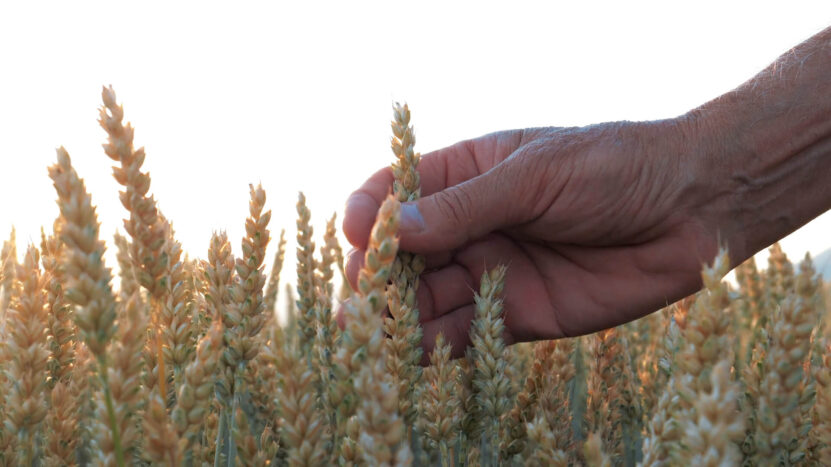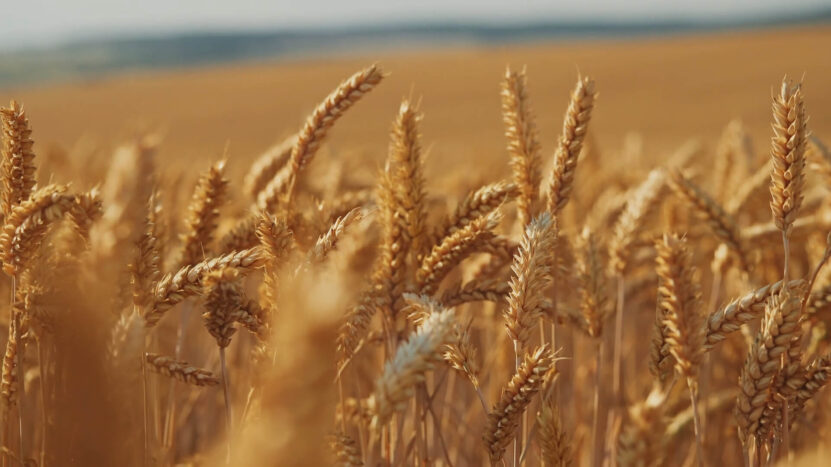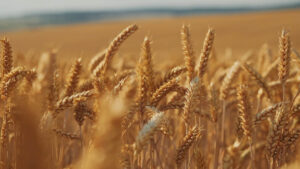The researchers want farmers and leaders to understand how global warming changes the planet. Knowledge could help with planning to still grow enough wheat even if the weather changes. The study is important to prepare for how climate change might impact food supply worldwide.
Disclaimer: Our article is a summary of the scientific document “Yield potential of world wheat based on ARIMA model under global warming”. You can check the original version – Yield potential of world wheat based on ARIMA model under global warming.
Wheat Yield and Global Warming
The study focuses on how global warming has impacted wheat production globally. It uses the ARIMA model, a type of statistical analysis, to predict wheat yields from 2019 to 2028. The researchers have found that while the average wheat yield is expected to increase from 3569 to 4257 kg ha-1 while top yields of world wheat are from 9852 to 11246 kg ha-1. Annual global mean temperatures are projected to increase from 15.05 to 15.31°C, and the highest possible yields might decrease. This suggests that while wheat may grow better on average, the top-producing regions could see a decline in their maximum yield capabilities.
ARIMA Model Explained

An autoregressive integrated moving average, or ARIMA, is a statistical analysis model that uses time series data to either better understand the data set or to predict future trends. A statistical model is autoregressive if it predicts future values based on past values. The ARIMA model helps to understand patterns in time-series data, like annual wheat yields, to make future predictions.
By analyzing past yield data from 1961 to 2018, researchers forecast that global wheat yields will continue to rise over the next decade. They also discuss the model’s ability to predict temperature trends and their impact on wheat yields.
Global Trends in Wheat Production
The analysis indicates a positive relationship between global mean temperatures and average wheat yields, highlighting that as temperatures have risen, so have wheat yields on average. However, the highest possible yields are negatively affected by increasing temperatures, potentially due to factors like increased frequency of extreme weather events.
Global Wheat Production in 2023
In 2023, several countries stood out as leaders in global wheat production, each contributing significantly to the world’s supply.
China

China topped global wheat production with 136,590 thousand metric tons, with Henan, Shandong, and Anhui being the largest contributing provinces.
European Union

The European Union closely followed, producing 134,150 thousand metric tons, with France, Germany, and Poland as key contributors.
India

India produced 110,554 thousand metric tons of wheat, mainly from Uttar Pradesh, Madhya Pradesh, and Punjab.
Russia

Russia’s significant regions like Southern, Central, and Volga areas helped reach a total of 91,500 thousand metric tons.
United States

In the United States, Kansas and North Dakota led the production, totaling 49,314 thousand metric tons.
Canada

Canada’s prairie provinces, especially Saskatchewan and Alberta, produced 31,954 thousand metric tons of wheat.
Pakistan

Pakistan, with Punjab leading, produced 28,200 thousand metric tons, focusing heavily on this central region.
Australia

Australia saw significant contributions from New South Wales and Western Australia, totaling 26,000 thousand metric tons.
Ukraine

Ukraine, with its diverse regions like Kharkivska and Dnipropetrovska, produced 23,400 thousand metric tons.
Turkey

Turkey’s Central Anatolia was the most productive region, helping to reach a total of 19,500 thousand metric tons.
What is the ARIMA model?
The ARIMA (Auto-regressive Integrated Moving Average) model is a statistical analysis tool used to forecast future trends based on past data.
How does global warming affect wheat yields?
Global warming has a mixed impact: it increases average wheat yields but may decrease the maximum yields that top-producing areas can achieve.
What does the study predict for future wheat yields?
The study predicts that from 2019 to 2028, average wheat yields will increase due to warmer global temperatures, but the highest yields might not reach their previous peaks.
In conclusion, the study uses the ARIMA model to analyze how global warming affects wheat yields globally. It finds that average yields will likely benefit from warmer temperatures, whereas the highest possible yields could decline. This research is important as it helps predict future agricultural trends and prepares for changes in global wheat production due to climate change. This information can aid in planning and improving agricultural strategies to cope with the changing climate.
Reference
CAI CHENG-ZHI, CAO WEN-FANG, ZENG XIAO-SHAN, ZUO JIN, XIAO DAN, LIAO CONGJIAN, & KANWALWAQAR. (2020). Yield potential of world wheat based on ARIMA model under global warming. Journal of Agrometeorology, 22(4), 397–406. https://doi.org/10.54386/jam.v22i4.442











